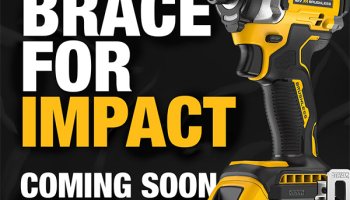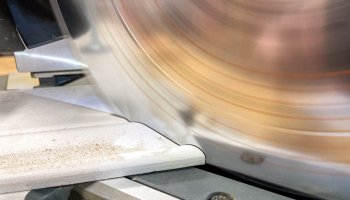
Having used dozens of laser distance measures from various brands, it’s clear some key features make a difference. The very first laser distance measure I actually owned was a Bosch GLM15, and I still use it. Since I got that tool, laser distance measures have become more commonplace. They also come with new technologies and features. Not everyone needs all those bells and whistles, though. I’ll help you figure out the best laser distance measurer for you.
We have some specific recommendations, but we also walk you through which features matter and what to look for as you shop.
Best Laser Distance Measurer for Accuracy
Leica DISTO D2

Most laser distance meters will have 1/8-inch accuracy at 30 feet. For basic estimating, that works just fine. The Leica DISTO D2 bumps that way up to 1/16-inch accuracy at 328 feet! You will pay more for this more accurate laser measure, but if you want the best laser distance measurer for accuracy, the Leica D2 is our top choice. It allows for measuring from edges, corners, and reveals and has a 10 measurement memory. It also interfaces with iOS and Google Play apps via Bluetooth.
Best Laser Distance Measurer for Outdoor Use
Bosch GLM 50 C 165 ft. Laser Measurer

The Bosch GLM 50 C tops our list for the best laser distance measurer for outdoor use. First and foremost, its inverted color LCD screen produces large, vibrant numbers that we can see in direct sunlight. With most LDMs, you get tiny digits we find hard to read outside. The display on the Bosch GLM 50 C fills the screen with distance measurements in feet and inches.
Of course, most laser distance measures work best indoors for estimating. However, when you do need to take a measurement outside, we like the features of this tool. It includes Bluetooth connectivity for use with the Bosch MeasureOn app for estimating over photos. It covers the basics, like real-time length, length, area, volume, and indirect measurements. You also get a built-in inclinometer for finding angles. In terms of runtime, the $119 GLM 50 C can take up to 10,000 measurements on a set of AAA batteries.
Best Laser Distance Measurer for DIYers
DeWalt DW040HD

The DeWalt DW040HD is a 40-foot pocket laser distance measure. No frills. No fancy controls. Is has just one button. It takes measurements up to 40 feet and features a rechargeable lithium-ion battery. That means no more fumbling with AAA batteries. Just pop it on a miniUSB charger every once in a while and you’re good for another several thousand measurements. It also comes with a wrist strap.
At $29, you might find a cheaper laser distance measure, but this is our pick for the best laser distance measurer for DIYers and home use. It helps you estimate carpet and tile, or measure a wall for paint without breaking the bank.
Best Laser Distance Measurer for the Money
Skil ME9821-00 Laser Distance Measure

The Skil ME9821-00 65-foot laser distance measure really impressed us with its array of features. It brings a no-nonsense measuring solution to DIYers and even entry-level professionals. Between the price, ease of use, and accuracy, the Skil ME9821-00 stands out. It’s a compelling choice in a sea of “me-too” products.
We also can’t fail to mention the simplicity and innovation of the wheel measure. For curved surface measurements, the Skil Laser Distance Measure features a wheel measuring mode. You can drag the wheel on the bottom of the unit forward or back across your surface to get an accurate measurement. If you change directions while dragging, it just subtracts the distance from the current measurement.
For under $50, this tool is the best laser distance measurer for the money—hands-down. It provides an inexpensive and convenient alternative to always having to bust out the tape measure. Need more range? Skil offers a 100-foot model for around $20 more.
Best Laser Distance Measurer for Pros
Milwaukee 150-ft Laser Distance Measure

When it comes to Pro features, we look for a combination of accuracy, durability, and features. The Milwaukee 150-ft Laser Distance Measure really impressed us with its combination of all of those. The laser is built around standard tool plastic and has a protective overmold on each of the four side edges. This should protect it in most drop situations.
For most interior work where a laser distance meter is a useful tool, the 150′ Milwaukee Laser Distance Meter finds a nice middle ground between range, accuracy, and feature set while keeping the price under $100. The Side Shot button and corner measurement lever are nice additions over standard measures and Milwaukee keeps the interface from being overly complicated.
Best Laser Distance Meter for Long-Range Use
Bosch Blaze GLM400CL

We find plenty of times where documentation is key. Pairing a phone with an LDM solves these problems. However, for longer-range applications, you often place the laser so far out that you can no longer easily track it. For that, you can make a case for integrating a zoom camera right into the tool. The Bosch Blaze GLM400CL does this with an adjustable zoom camera that helps you find the laser spot in bright conditions.
Measuring up to 400-feet, the Bosch Blaze lets you take and spot your measurement and then transfer the measurement documentation directly to a smartphone or tablet. It uses Bluetooth connectivity to its MeasureOn app. This outdoor laser measure hits all the basics and also adds a built-in inclinometer to help determine the angle of pitch. It even confirms when the tool is level for free-hand use.
Rounding everything out is a backlit color LCD display, reinforced screen glass, and the ability to see the last 50 measurements on the tool. It also stores up to 600 images. You can get more range from Leica, but at just $299, this nails our pick for the best laser distance meter for long-range use.
Also Recommended
- Leica DISTO S910 (0.05 accuracy up to 300m) – $1499
How Far Do Laser Distance Measures Measure?
The first question you need to ask is: How far do you typically need to measure? Do you work mostly indoors or outside (in the sunlight)? Do you mostly focus on residential projects or commercial?
Using Laser Measures Outdoors: Keep in mind that laser measures do work outdoors. Even though you may not be able to see the laser, it’s accurate if it falls within its range of use. Still, you do need to be certain you hit the right target! (See the “What is a Digital Viewfinder” section below)
If you’re working on residential jobs, 50 feet of range often covers your needs for indoor measurements. If you estimate fencing or other outdoor products, you may want to go with a tool capable of greater distances.
Commercial applications usually require larger distance measurements, so a longer range tool makes sense. The further a laser distance measure can measure, the more powerful the laser and sensor need to be.
Make the Call: Consider the longest measurements you need a laser distance measure for. Get a model that will extend a little beyond that.
How Much Memory or Storage Do I Need?
A basic laser distance measure doesn’t have any memory storage. The best it will give you is the ability to hold a measurement. Others might give you storage for up to 200 measurements or more. Decide how comfortable you are recording measurements in a notebook or on your phone. If you’re a good note-taker or don’t want to trust technology, memory might not be a big deal. On the other hand, storing those figures right in the tool makes for a potentially quicker workflow.
Make the Call: This is a judgment call. I like a laser measure with at least 50 data points of storage so I can have an entire house’s worth of measurements. I still record them in a notebook, though.
Best Kind of Screens for Laser Distance Measures
The two major screen types you’ll find are LCD and LED. LED is much brighter and easier to read. This really helps in bright sunlight. Many LCD displays have a backlight that helps in low light conditions, but can be tough to read in direct sun. “Inverted” colors also help as white text on a dark background is easier to read in the sun than black text on white.

Make the Call: Both screens work just fine, but we prefer LED and the option for inverted screens if we have a choice.
Are Color LCD Screens Necessary?
We keep seeing new-fangled products with full-color LCD displays. So far, this hasn’t proved terribly helpful. There are, however, some specific instances where a full-color screen may help. In particular, models with built-in cameras make for much more impressive estimating documentation at the end of the job. Still, other models serve as long-distance rangefinders, helping you find that dot that might be as far as several hundred yards away.
Can Laser Distance Measures Give You Real-Time Measurements?
Typically, yes. Real-time measurements give you instant feedback as you move the laser rather than waiting for you to press a “measure” button. It gives you the ability to find an exact distance away from a wall or ceiling so you can make a mark before punching a hole through it. None of our Pro team is interested in a laser distance meter that doesn’t have this feature.
Make the Call: In our opinion, the real-time measurement function is a must-have feature.
Does it Support Addition/Subtraction?
Addition and subtraction are handy features to have when you need to combine two lengths that you can’t measure in one shot. They also help when you need to exclude part of a measurement. It works in conjunction with distance, area, and volume as well. If you’re doing an estimate for painting, it’s an easy way to take out the area of garage doors and other large non-paintable areas as you go.
Make the Call: This is a function you’ll find on all but the most basic laser distance measures, and it’s pretty helpful on area calculations in particular.
Can It Calculate Area and Volume?
Chances are that if your laser measure has addition and subtraction, it will also have area, volume, and indirect measurement (see below). This simply allows you to take two (for area) or three (for volume) measurements and automatically get the result. When estimating for paint, drywall, flooring, airflow, and more, we consider this an essential function.
Make the Call: Aside from making a basic measurement, area and volume functions are among the most helpful. You probably want it on your laser distance meter.
Can You Take an Indirect Measurement (use the Pythagorean Theorem)?
Indirect measurement goes hand in hand with area and volume functions. The difference is that you measure straight to the base of the material (the leg of the right triangle) and from the same point to the top of the material (the hypotenuse) to get a height that you can’t measure directly.
Make the Call: This one’s not a make-or-break feature for most of our team, but you’ll probably get it along with area and volume. It’s actually a really cool feature if you find yourself needing it. An advancd version of this also integrates an angle measurement. This lets you measure various heights at a distance—even off the ground.
Is a Wireless Connection (Bluetooth) Helpful?
Getting data off the tool is almost as important as getting it in if you do estimates and bids. If you’re on the tech-savvy side of things, a Bluetooth connection can help you transfer data from your laser distance measure to your phone, tablet, or computer.
There’s likely an app to go along with it as well. Some apps even give you the ability to overlay measurements on pictures or drawings of the work. When putting together a bid or quote, this lets you show your client visuals and bring an extra layer of professionalism to your proposal.

Make the Call: There’s a learning curve that comes with adding this layer of technology. Those who learn to use it can save tons of time and produce much more data-rich proposals and estimates. While Bluetooth is helpful in laser measures, it’s not an industry standard, so it’s completely up to your comfort level if you want it.
What is a Digital Viewfinder and How Does It Help?
A digital viewfinder is most helpful on a long-range laser distance measure where it’s difficult to see where the laser dot lands. When you’re measuring distances closing in on 400 feet, being off by a couple of degrees can make a big difference in your results.
Make the call: You can only see red lasers out to so far before you need to bounce it off a target card and possibly have a second person helping. The digital viewfinder is really helpful for longer range outdoor applications.
Should I Get a Model with a Camera?
Some laser distance measures add a camera to their digital viewfinder. This can make it easier to generate a photo with measurement layovers. This works alongside a Bluetooth connection to transfer the results into an app. This feature appears on high-end laser measures and comes with a premium price.
Other system featuring camera-integration function as rangefinders. These help you “zoom-in” on far away objects you’re trying to hit with that little red dot.
Your Choice: This is most helpful on commercial sites where there’s a lot of technology in place to get information where it needs to go quickly. However, using technology like this as a residential contractor will definitely set you apart.
Lithium-ion Rechargeable or Battery as a Power Source?
Many laser distance meters use AAA or AA batteries as a power source, though some have an integrated lithium-ion battery. Standard alkaline batteries are relatively inexpensive and easy to find. Rechargeable batteries make sense for some of the larger, more powerful models and keep you from having to carry around spares…as long as you remember to charge it!
Make the Call: There’s not really a bad call here. Alkaline batteries will keep your initial cost down and lithium-ion is more convenient. I like lithium-ion, but the majority of our laser distance meters are alkaline.
How Much Should I Pay? What’s a Good Price?
How much you’re willing to spend is another first thing to consider. Laser measures can cost as little as $20. Commercial units might run more than $1,000. The latter will deliver longer ranges. They might also connect to a laptop and provide the ability to estimate roofing, enter data into CAD files, etc.
You want to find a laser distance measure that checks off all your needs and stays within budget. Any of the bonus features you can get for the same price are, well, a bonus!










